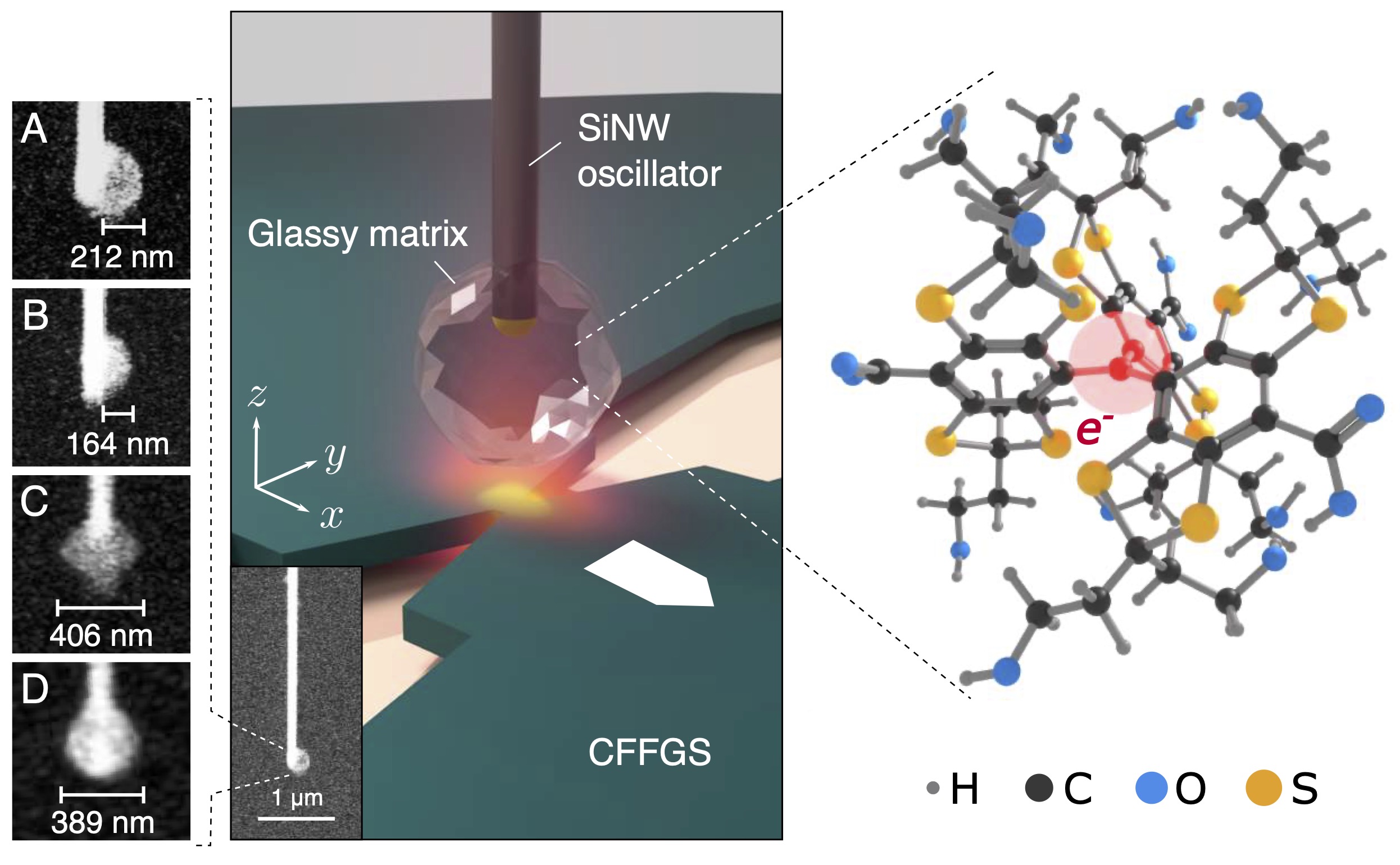Bringing DNP to nanoMRI

The diverse field of NMR spectroscopy and imaging has been plagued by low detection sensitivity since its inception. Among the various methods divised to mitigate this, dynamic nuclear polarization (DNP) has proven to be a powerful technique for enhancing the detection sensitivity by orders of magnitude. In DNP, a microwave pulse sequence is utilized to transfer the larger polarization of the surrounding electrons to nearby nuclei, thereby enhancing the detected signal. Bringing DNP to force-detected nanoMRI setup would open up new possibilities for nanoscale NMR spectroscopy and imaging with near atomic resolution.

Recently, we demonstrated nanoscale pulsed DNP at 6 K and 0.33 T using electrons from the trityl-OX063 radical [1], thereby enhancing the average proton polarization by two orders of magnitude. Importantly, for nanoscale samples, statistical fluctuations in the polarization dominate the average polarization at thermal equilibrium. Therefore, for DNP to provide an SNR-advantage, it has to boost the average polarization above the statistical polarization. We show that the enhanced polarization corresponds to a factor of 200 reduction in the averaging times compared to measurements that rely on statistical fluctuations.
To compensate the high Rabi dispersion in our sample, we used a DNP protocol called the Ramped Amplitude NOVEL to achieve these exciting results. Once the spin polarization is transferred from the electron to the proton spins, the polarization spreeads across the proton spin network via spin diffusion. Here is a simulation of the Ramped Amplitude NOVEL protocol on the left and a simulation of the spin diffusion throughout the proton network on the right. For the upcoming experiments, we plan to extend this work to higher fields and sub-Kelvin temperatures, which could lead to a fundamentally new regime for nuclear spin detection sensitivity.